I attended a local Audubon talk by Monika Moore on the experiences with her butterfly garden. In 2002 she started transforming the hardscape in her Fullerton, CA backyard into a butterfly haven, particularly for Monarchs. I think photos tell the story better than words so will begin with photos from her talk. Below are some other points from her presentation on how to attract butterflies to your yard.
Other takeaways:
- Research the butterflies you want to attract: “There are more than 25,000 species of butterflies and moths,” says Moore. “Each one has a different food source. I like to tell people to research the butterfly you would like to attract, find out it’s food source, plant it, and they will come. You must plant what their caterpillars eat to have the whole life cycle.”
- Plant the butterfly’s host plant and nectar plants. For example, the host plant for Monarchs is one of the varieties of milkweed (Asclepias) which is required for the egg-laying and caterpillar food source, while Gulf Fritillaries require passionvine (Passiflora). Some, such as the many Western Tiger Swallowtails on our property, use several trees such as sycamore, cottonwood or willow as food for their caterpillars. Nectar plants for butterflies include lantana, butterfly bush, and members of the sunflower family (asters, zinnias, marigold). We find our native plants such as buckwheat (Erigonium) and the many varieties of wild lilacs (ceanothus) have attracted more butterflies.
- Expect predators, especially after a few years. As Moore puts it, “Raising the butterflies was real easy the first years but predators will show up and want their share of the bounty.” Praying mantis, wasps that lay their larva inside the caterpillar, and lizards are her most common predators.
- Avoid pesticides. Pesticide use in the home garden and in local agriculture where the butterflies may feed, are deadly to both the caterpillar and butterfly stages.
- Avoid plants treated with pesticides. One attendee shared how a friend’s Monarch caterpillars had eaten most of her milkweed so she purchased more from a local Armstrongs. Unfortunately, the plants had been treated with a systemic pesticide, which killed all the caterpillars. Make sure you buy plants from a nursery that does not use pesticides.
- Expect your host plants to get eaten quite a bit. Each caterpillar eats 28 to 38 leaves and will shed their skin four times as they outgrow it – before entering the chrysalis stage.
- California Monarchs staying home: Moore has focused on Monarchs and this year her yard is a certified waystation where she helps track monarch movements by placing a small tag on her butterflies. Research is showing that California butterflies are travelling up and down the coast for their lifecycle, instead of ending in Mexico. Right now, she’s wondering why her older Monarchs are taking awhile to move on. Four generations are needed to make the migration, with the first three generations living about six weeks. The last Monarch generation, which delays mating until the journey is over, gets to live a lot longer – about nine months if it can escape its many predators.
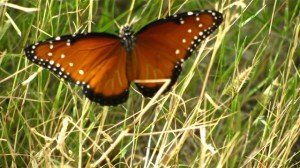
Good references:
Butterfly Gardening, Xerces Society
Caterpillars in the Field and Garden, Thomas Allen, et al.
For Southern Californians:
An Introduction to Southern California Butterflies, Fred Heath

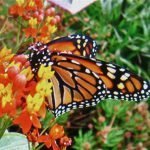
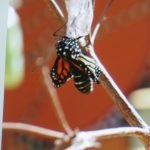
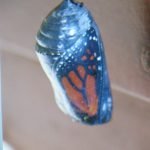
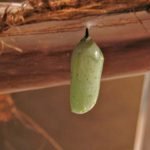
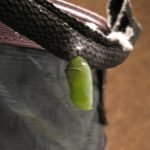
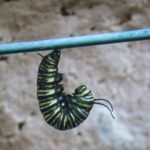
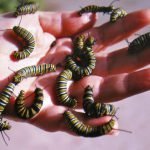
Dear Linda,
Thank you very much for this lovely write up. Beautifully done.
Sincerely,
Monika Moore
You’re very welcome! It was a pleasure to attend your talk.